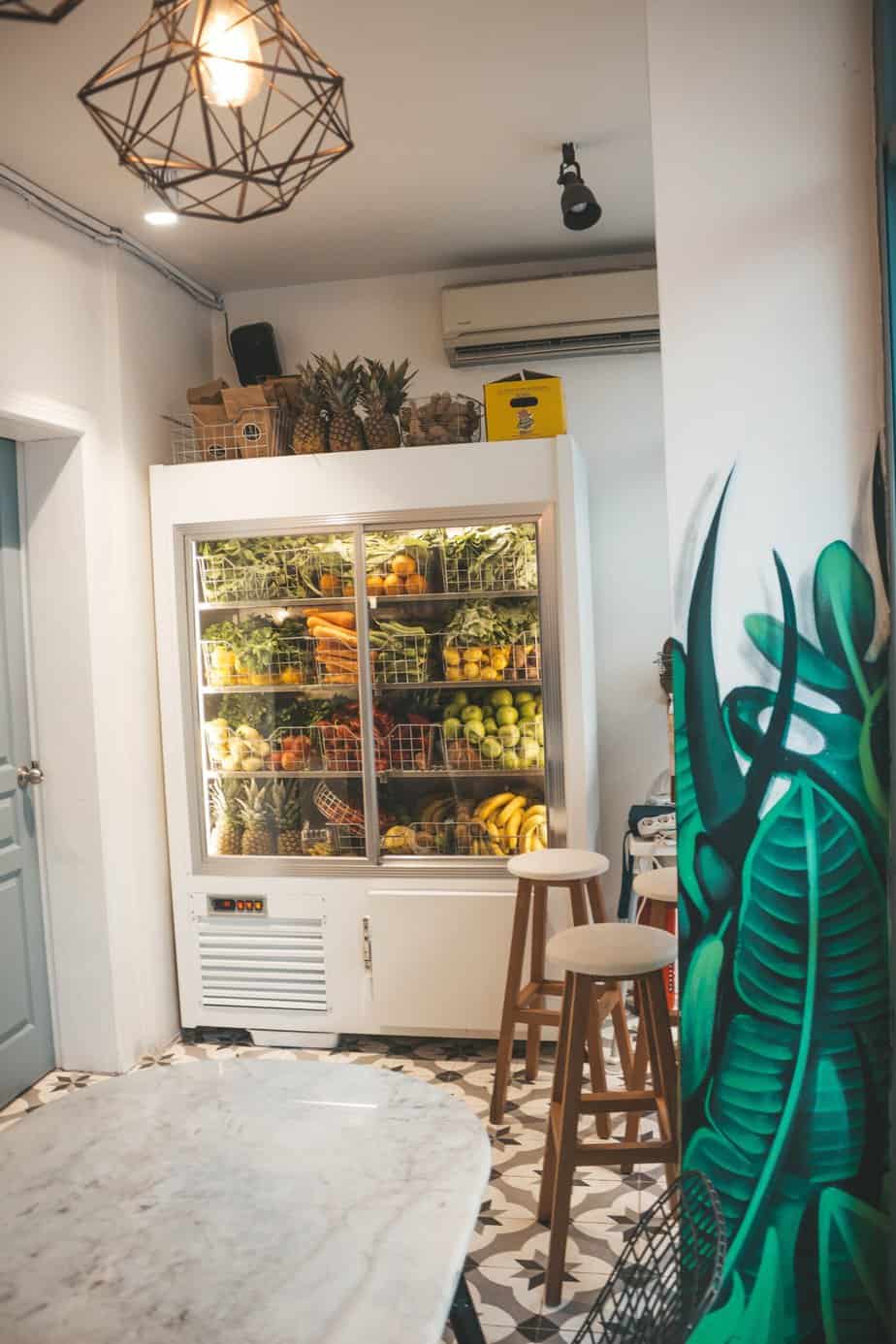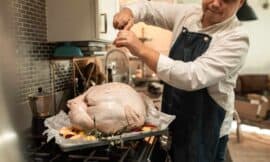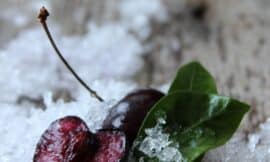How to defrost food in fridge? To defrost food in the fridge, transfer the frozen item from the freezer to the refrigerator, ensuring it’s in a container to catch any drips and prevent cross-contamination. The cold temperature allows for slow, safe thawing, maintaining food quality and minimizing bacterial growth. Depending on the food’s size and density, defrosting can take from several hours to a full day, so plan ahead. Meat, poultry, and seafood should be placed on the bottom shelf to avoid dripping onto other foods. Always cook defrosted food within 24-48 hours to ensure safety.
Defrosting food in the fridge is one of the safest methods to thaw food, as it prevents the growth of harmful bacteria that can cause food poisoning. In this article, we will explain how to defrost food in fridge, and provide you with some tips to ensure that your food is defrosted safely and correctly.

Understanding the Refrigeration Defrosting Process is the first step to defrosting food in the fridge. Refrigeration works by removing heat from the food, which slows down the growth of bacteria. When you defrost food in the fridge, you are allowing the food to gradually thaw as the cold air circulates around it. This is a slow process, but it is the safest way to defrost food, as it prevents the growth of harmful bacteria that can cause food poisoning.
Safe Defrosting Practices are essential to ensure that your food is defrosted safely. Always defrost food in the fridge, as it is the safest method. Avoid defrosting food at room temperature, as it can cause bacteria to grow rapidly. Never defrost food in warm water or in the microwave, as this can cause the food to cook unevenly and can even lead to food poisoning. Always ensure that the food is completely defrosted before cooking it, as cooking partially defrosted food can also lead to food poisoning.
Key Takeaways on how to defrost food in fridge
- Defrosting food in the fridge is the safest method to thaw food.
- Understanding the Refrigeration Defrosting Process is important.
- Safe Defrosting Practices are essential to ensure that your food is defrosted safely.
Understanding the Defrosting Process in Refrigerator
When it comes to defrosting food, the refrigerator is one of the safest and most effective methods. However, it is important to understand the refrigerator defrosting process to ensure that the food is properly thawed and safe to eat.
Refrigerator Thaw Time
The time it takes to thaw food in the refrigerator depends on several factors, such as the size and thickness of the food, and the temperature of the refrigerator. Generally, it is recommended to allow 24 hours of thawing time for every 5 pounds of food. This means that a 10-pound turkey would take approximately 48 hours to thaw in the refrigerator.
Refrigerator Temperature for Thawing
The ideal temperature for thawing food in the refrigerator is between 33°F and 40°F (0.5°C and 4.4°C). This temperature range ensures that the food stays cold enough to prevent bacterial growth, but not so cold that it freezes. It is important to note that the temperature of the refrigerator should always be below 40°F (4.4°C) to prevent the growth of harmful bacteria.
In summary, understanding the refrigerator defrosting process is crucial for ensuring that food is thawed safely and properly. By following the recommended thawing time and temperature, you can ensure that your food is safe to eat and free from harmful bacteria.
Refrigerators with Defrosting Facility
For those seeking refrigerators with defrosting facilities, here are a few models from renowned brands that come equipped with features to help manage frost and enhance food preservation:
- GE 21.9 cu. ft. Top Freezer Refrigerator: This GE model is suitable for unconditioned spaces like garages, thanks to its ability to operate in a wide range of room temperatures. It offers customizable storage options and easy-to-use temperature controls for both the fridge and freezer compartments. However, it’s not Energy Star certified.
- Whirlpool 18.2 cu. ft. Top-Freezer Refrigerator: This refrigerator includes a factory-installed ice maker, electronic temperature controls, and flexible storage solutions, including a Flexi-Slide bin. It’s available in stainless steel, white, and black but lacks Energy Star certification.
- Magic Chef 10.1 cu. ft. Top Freezer Refrigerator: Compact and Energy Star certified, this model is ideal for small spaces. It offers practical storage solutions with full-width shelves and door bins in both the fridge and freezer compartments. Available in platinum steel, black, and white, it’s designed for those who need a smaller refrigerator without compromising functionality.
- LG 23.8 cu. ft. Top Freezer Refrigerator: Suitable for larger families or those needing significant food storage, this LG model boasts humidity-controlled crispers, a deli drawer, adjustable glass shelves, and an in-door cold-water dispenser. It features a multi-airflow system with digital sensors to maintain optimal conditions and is Energy Star certified.
Each of these models offers distinct advantages, whether you’re looking for compact design, energy efficiency, or advanced features like factory-installed ice makers and digital temperature controls. Consider the size of your space, your budget, and specific needs like garage compatibility or the importance of an ice maker when choosing the right model for you.
Safe Defrosting Practices in Refrigerator
When it comes to defrosting food, safety should always be a top priority. Proper defrosting techniques can help prevent the growth of harmful bacteria and maintain the quality of your food. In this section, we will discuss safe defrosting practices in the fridge, including food safety and refrigeration and avoiding cross-contamination in the fridge.
Food Safety and Refrigeration
The fridge is one of the safest places to defrost food. It is important to always defrost food in the fridge if you have time. This method is the slowest but the safest way to defrost food. It allows the food to thaw gradually and at a consistent temperature, which helps prevent the growth of harmful bacteria.
Avoiding Cross-Contamination in Fridge
Cross-contamination can occur when harmful bacteria from one food item is transferred to another food item. To prevent cross-contamination when defrosting food in the fridge, it is important to keep the food separate from other foods. Always place the food on the bottom shelf of the fridge to prevent any juices from dripping onto other foods.
It is also important to clean and sanitize the fridge regularly to prevent the growth of harmful bacteria. Use a solution of one tablespoon of bleach to one gallon of water to sanitize the fridge. Be sure to rinse the fridge thoroughly with water after sanitizing.
Managing Thawed Food
When it comes to managing thawed food, there are a few guidelines that we should follow to ensure that the food is safe to eat and of good quality. In this section, we will discuss some of the best practices for refreezing thawed food and keeping food safe while thawing.
Refreezing Thawed Food Guidelines
It is generally safe to refreeze thawed food, but there are some guidelines that we should follow to ensure the safety and quality of the food. First, we should only refreeze food that has been thawed in the refrigerator. If the food has been thawed at room temperature or in the microwave, it should not be refrozen.
Second, we should only refreeze food that has not been cooked. If the food has been cooked, it should not be refrozen as it may lead to bacterial growth and spoilage. Additionally, we should only refreeze food that has been stored in the refrigerator for a short period of time. If the food has been in the refrigerator for more than a few days, it should be discarded instead of refrozen.
Keeping Food Safe While Thawing
Thawing food in the refrigerator is the safest method, as it prevents the growth of harmful bacteria. However, it can take some time, so it is important to plan ahead and allow enough time for the food to thaw. As a general rule, we should allow 24 hours for every 5 pounds of food.
Regardless of the thawing method we use, we should always keep the food in a leak-proof container to prevent cross-contamination. We should also avoid thawing food on the counter at room temperature, as this can promote the growth of harmful bacteria.
Frequently Asked Questions
What is the recommended time frame for defrosting food in the refrigerator?
The recommended time frame for defrosting food in the refrigerator is 24 hours for every 5 pounds of food. This ensures that the food thaws evenly and safely without any spoilage.
Can you use a microwave to defrost food that has been stored in the fridge?
Yes, you can use a microwave to defrost food that has been stored in the fridge. However, it is important to note that this method may not be as safe as defrosting in the refrigerator. The microwave can cause some parts of the food to cook while others remain frozen, which can lead to uneven cooking and possible foodborne illness.
What are the quickest methods to defrost food safely in the refrigerator?
The quickest method to defrost food safely in the refrigerator is to place the food in a shallow dish or container and keep it on the bottom shelf of the fridge. This allows for even thawing and prevents any juices from dripping onto other food items.
How long does it typically take for meat to thaw in the refrigerator?
It typically takes 24 hours for every 5 pounds of meat to thaw in the refrigerator. However, this can vary depending on the size and type of meat. It is important to check the meat periodically to ensure that it is thawing evenly and not spoiling.
Is it necessary to defrost all food prior to cooking, and if so, why?
It is necessary to defrost all food prior to cooking to ensure that it cooks evenly and safely. Cooking frozen food can cause some parts to cook while others remain frozen, which can lead to uneven cooking and possible foodborne illness.
What are the food safety guidelines for consuming defrosted food?
When consuming defrosted food, it is important to follow proper food safety guidelines. This includes cooking the food to the appropriate temperature to kill any harmful bacteria, storing leftovers in the refrigerator within two hours of cooking, and consuming leftovers within three to four days. It is also important to avoid refreezing defrosted food, as this can lead to spoilage and potential illness.
Here are some of the best ways to defrost frozen foods and some common frozen food myths.
Check out our indepth article on how to defrost in an airfryer.





